Introduction
The development of creative tourism has been a growing trend in the tourism industry in recent years. This type of tourism is based on visitors engaging with a destination’s local creative and cultural resources rather than simply consuming the products and services on offer (Al-Ababneh, M.M. 2019). This can include attending local festivals and events, visiting art galleries and museums, and participating in workshops and classes. The benefits of creative tourism have been well documented, with research showing that it can lead to increased satisfaction and loyalty among visitors and promote economic development and social inclusion. Thus, a creative tourism trial in a destination can be a valuable way of testing the waters and gauging the potential for this type of tourism to become a more significant part of the local tourism offer.
Purpose of the Report
This report aims to provide a creative tourism trial to encourage visitors to explore Istanbul beyond the well-known tourist path. The trial will showcase innovative and cultural resources that will help visitors to discover Istanbul’s hidden treasures (Al-Ababneh, M.M. 2019). The report will include an introduction to tourism and creativity, a description of the selected city, and the proposed creative tourist trail. The findings of this report will not only help to promote the town to a broader audience but also help to boost the local economy.
Various sources to inform the report was used to develop a creative tourism trial. For instance, online scholarly sources such as travel websites, news articles, and destination marketing organization websites were reviewed to research Istanbul’s creative and cultural resources (Bakas et al., 2020). In addition, the report was developed using offline sources such as books and brochures to learn more about Istanbul and its attractions. The academic sources used were relevant to the study since they helped identify the resources that would be most beneficial to include in the trial.
Sections of the Report
This report will consist of various sections that collectively aim at providing a vivid analysis of the role and importance of creativity and tourism in Istanbul. The report comprises an introduction, tourism and creativity, the selected city, a creative tourist trial, and a conclusion (Bakas et al., 2020). In the tourism and creativity section, the paper will address what is, how creativity and tourism are related, and how creativity can be used to enhance the tourism experience. The selected city section will focus on Istanbul and its potential as a creative tourism destination. The report highlights the city’s creative and cultural resources. The conclusion will summarize the key findings of the report.
Tourism and Creativity
Creativity plays a fundamental role in tourism and is otften a critical factor in destination marketing and development. In essence, it is a primary driver of the tourism economy, with the creative industries accounting for a significant proportion of GDP in many countries (Bakas et al., 2020). There are many definitions of creativity, but it can be broadly defined as the ability to generate new and innovative ideas. This can be done through individual creativity or by working collaboratively with others. Creativity is often seen as a critical ingredient in the tourism experience for tourists and those working in the industry. It can be used to create unique and memorable experiences and to differentiate a destination from others. There is a growing body of research on the role of creativity in tourism and its potential to contribute to sustainable tourism development (Oscar, C. 2020, 5). This research is essential to understand the potential of creativity in tourism and how it can be harnessed to create positive outcomes for all stakeholders.
Creativity has always been an essential aspect of tourism, but its role has become even more significant in recent years. The creative industries comprise o entities that are based on creativity and innovation, such as advertising, architecture, arts and crafts, design, fashion, film, music, software development, and television (Demir, E.M. n.d. 3). These industries are essential to tourism because they create the “buzz” that attracts visitors to a destination. Creative areas are those parts of a city or region that are particularly vibrant and creative. They are often the places where the creative industries are concentrated, and they are often the most popular tourist destinations. Creative tourism is a type of tourism that involves visiting places that are associated with creativity and culture (Al-Ababneh, M.M. 2019). It can include attending art galleries, visiting historic sites, or participating in local festivals.
Creative Industries
The creative industries are an essential part of cities’ economies and play a significant role in the city’s tourism industry (Bakas et al., 2020). This includes sectors such as advertising, architecture, art and design, fashion, film, music, television, and video games. The city is home to several world-renowned museums and galleries and a thriving music and nightlife scene. Cities’ creative industries are responsible for developing new and innovative tourism products and services. For example, the city’s hotel and restaurant industry has been quick to adapt to the needs of tourists, offering a range of creative and unique experiences (Demir, E.M. n.d. 13). The role of creativity in tourism is likely to become even more critical in the future, as the industry looks to find new ways to attract and retain visitors.
Creative Areas
Creative areas are another essential resource for cities to thrive in the tourism market. These areas have been developed to encourage creativity and innovation and often intensely focus on the arts. Creative areas include art galleries, museums, theatres, music venues, and public art installations. They are often located in areas of cities that are already popular with tourists and can provide an additional reason for visitors to come to a destination. Creative tourism is a form of tourism that involves visitors traveling to a destination in order to experience its creative culture (Bakas et al., 2020). This can include attending art and design events, visiting museums and galleries, or participating in workshops and classes. Creative tourism can provide a more authentic and immersive experience for visitors and can help to support the local creative economy.
Creative Experience
Creativity plays a vital role in tourism and is critical in attracting visitors to a destination. First, creativity can provide cities with a unique selling proposition that can attract visitors and provide a city with jobs and economic activity. Finally, creative tourism can provide visitors with an authentic and unique experience unavailable in other destinations. Creative tourism promotes destinations and makes them more accessible to tourists.
The Selected city
Turkey’s most populous city, Istanbul, is located in the country’s northwest, straddling the Bosporus Strait between the Sea of Marmara and the Black Sea. Istanbul occupies two different worlds, bridging the gap between Europe and Asia (Parlak & Baycan, 2020, 12). The city is home to a unique blend of cultures with a rich history dating back over 2,000 years. The city has a lot to offer tourists, from its many historical sites to its vibrant nightlife. Creativity and tourism are essential to Istanbul, as they are to any city. Creativity can be seen in the city’s architecture, food, and how the city has been able to preserve its history while also modernizing (Stalmirska, A.M. 2020, 25). Tourism is vital to Istanbul because it brings in revenue and helps to promote the city to the world. Istanbul is a city that has something for everyone. Its many different neighborhoods offer a variety of experiences, and there is always something new to see and do. Istanbul is a city that everyone should visit at least once in their lifetime.
Various reports on tourism in Istanbul provide an insight on the performance of the industry in the area. people According to the Istanbul Tourism and Culture Directorate, Istanbul is one of the world’s most popular tourist destinations, attracting over 12 million visitors each year (Üzülmez & Akdağ, 2020, 7). In 2018, it was ranked the fifth most popular tourist destination. In 2019, the city was visited by over 16 million international tourists, which was a 6% increase from the previous year (Turgut, H. 2021, 2). The COVID-19 pandemic significantly impacted tourism in Istanbul, with visitor numbers dropping in 2020 (Ekici, A. 2022, 1). Thus, Istanbul welcomed over 12.6 million visitors, making it one of the most visited cities in the world (Turgut, H. 2021, 2). In 2021, Istanbul welcomed an estimated 15.8 million tourists, again making it the city’s most-visited year (Turgut, H. 2021, 2). Most visitors to Istanbul come from within Turkey, with around 12.5 million domestic tourists flocking to the city each year. However, Istanbul is a hugely popular destination for international visitors, with over 3 million people coming from abroad in 2021(Turgut, H. 2021, 5). The top five countries of origin for international tourists are Germany, Russia, the United Kingdom, the United States, and China.
Creativity in Istanbul City
Istanbul is one of the most populous, creative cities and tourist destinations, attracting millions of visitors each year. The city has a long history of art and culture and is home to several creative industries (Al-Ababneh, M.M. 2019). The creative industries are a vital part of Istanbul’s economy and include a range of businesses from advertising and architecture to fashion and film. The city is home to several world-renowned creative businesses, including Wieden+Kennedy, DDB, and Saatchi & Saatchi. Istanbul has a thriving fashion industry, with many local and international designers based in the city. The presence of the creative industries in Istanbul significantly contributes to the city’s economy and international reputation. The industries employ many people and attract visitors from all over the world. Istanbul’s creative scene is a crucial part of what makes the city such a popular tourist destination.
Istanbul is a city with a long and rich history that is reflected in its architecture. The city has been home to various civilizations over the centuries, reflected in the diverse range of creative areas or quarters found within its borders. Istanbul’s most obvious creative quarter is the historic center, home to many critical architectural landmarks such as the Hagia Sophia and the Blue Mosque (Parlak & Baycan, 2020, 12). This area is home to many art galleries, museums, and other cultural institutions. Another fundamental creative quarter in Istanbul is Beyoglu, home to many important artistic and cultural institutions, such as the Istanbul Modern art museum and the Pera Museum (Bakas et al., 2020). This area is also home to many trendy bars, restaurants, and cafes. Finally, Istanbul has many smaller creative quarters that are worth exploring. These include the Bohemian quarter of Cihangir, the artsy district of Galata, and the hipster neighborhood of Kadikoy.
The most popular tourist destinations often offer the most unique and creative experiences. Istanbul is a city that has long been known for its creative tourism experiences (Demir, E.M. n.d. 23). From its rich history and culture to its modern and cosmopolitan atmosphere, Istanbul has something to offer everyone. Istanbul has been home to numerous civilizations over the centuries, and this is reflected in its architecture, art, and cuisine. The city is home to several world-renowned museums, which offer visitors the chance to learn about the history and culture of Istanbul and see some of the most famous artifacts in the world. In addition, Istanbul is known by numerous people for being a modern and cosmopolitan city. It is home to a thriving nightlife scene, with many bars, clubs, and restaurants to choose from. The city has some shopping malls and designer boutiques. Furthermore, of course, Istanbul is home to several world-famous landmarks, such as the Blue Mosque and the Hagia Sophia. All these factors make Istanbul a city perfect for a creative tourism experience.
Creative Tourism Trail
Welcome to Istanbul, a city rich in history and culture! On this creative tourist trail, tourists will explore some of the city’s most iconic landmarks and get a taste of its vibrant arts scene. During our tourist walk, we will visit both the hidden treasures of the city and popular places that attract people coming to Istanbul every year. Thus, we will get acquainted with you and immerse ourselves in the heart of the city with the help of such places as the Museum of Innocence, Istanbul Museum of Modern Art, Galata Tower, Saint Stephen Church, Rustem Pasha Mosque, Walls of Constantinople, Theodosius Cistern and Heritage Nomadic Art Gallery. After our trail you will feel the atmosphere of the city, learn more about its culture and heritage.
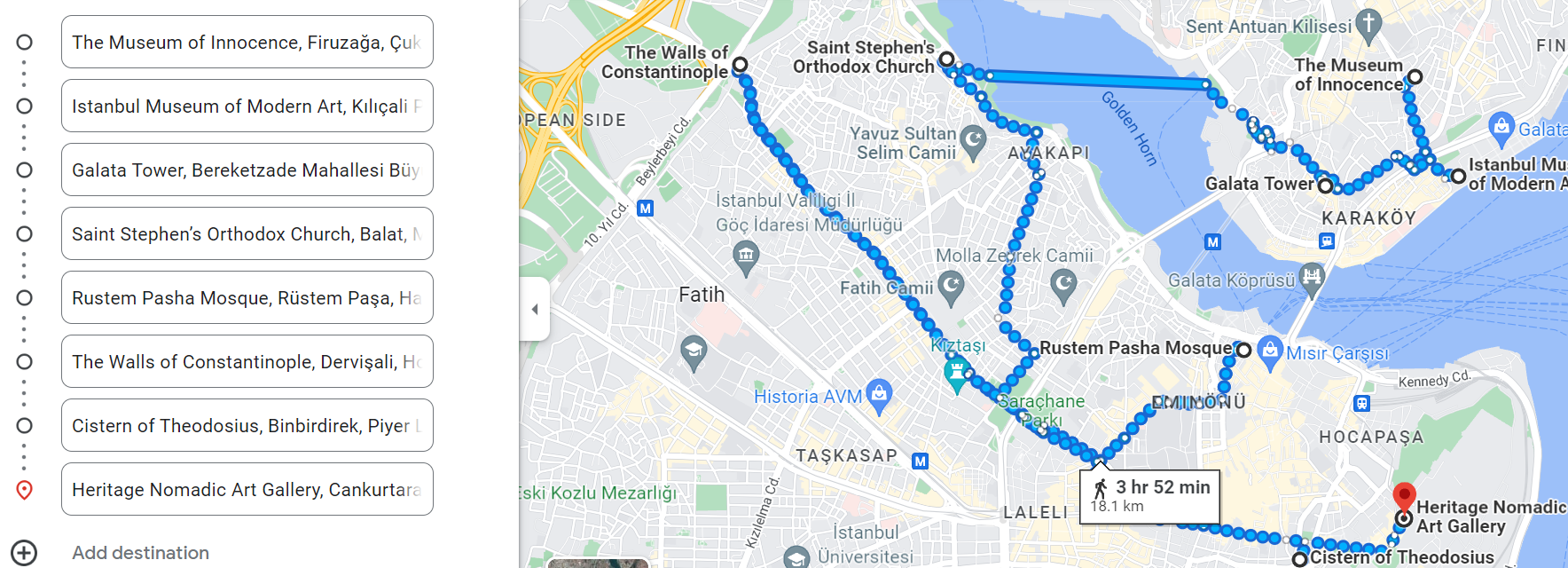
The Creative Trail in Istanbul
Visit the Museum of Innocence
The first stop on our way to get acquainted with the city and its unique sights is The Museum of Innocence. It is not the most common location to visit among tourists, but it provides an unforgettable experience and gives you the opportunity to immerse yourself more deeply in the cultural heritage of the city. The creator of this museum is Orhan Pamuk, who created an attraction in which even the most sophisticated tourist will find something interesting for himself. Hence, the museum has installations based on “daily life described in the author’s eponymous novel” (The Museum of Innocence, n.d., para. 3). The novel “The Museum of Innocence” has become one of the representations of the history of the Turkish city.
Thus, the museum is based on the romantic story of two lovers from different families. Furthermore, a native of a wealthy Kemal family falls in love with his distant relative from a poor family. Their secret meetings are filled with feelings and emotions, and they continue even after the young man’s marriage. It becomes interesting that all the objects presented in the museum are objects that Kemal took away from their meeting place. Thus, it occupies five floors, each of which contains a display that represents each chapter of the novel. After visiting the museum, we swami will walk through the district in which the museum is located. The main object will be the pedestrian street of Istanbul Istiklal, which includes other delightful architectural sights of the city. In addition, we will pass by many small authentic shops and shops where you can buy a small souvenir for yourself.
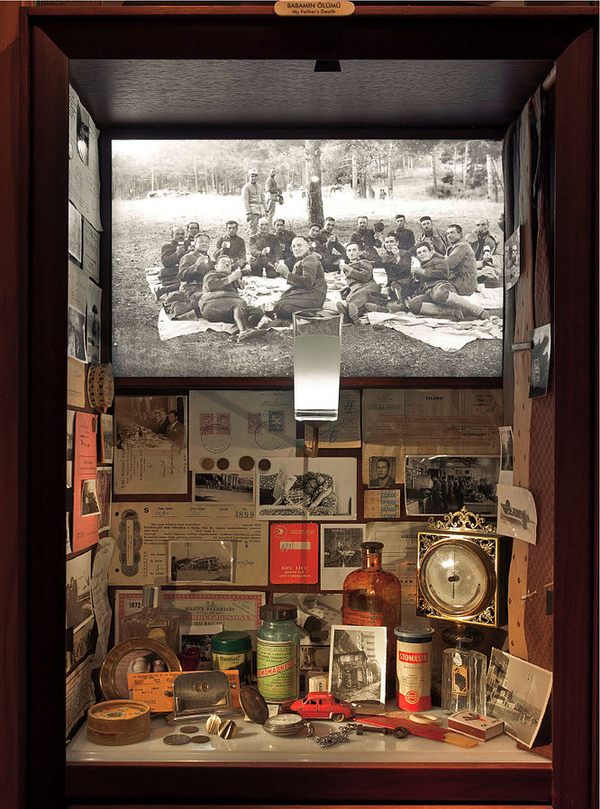
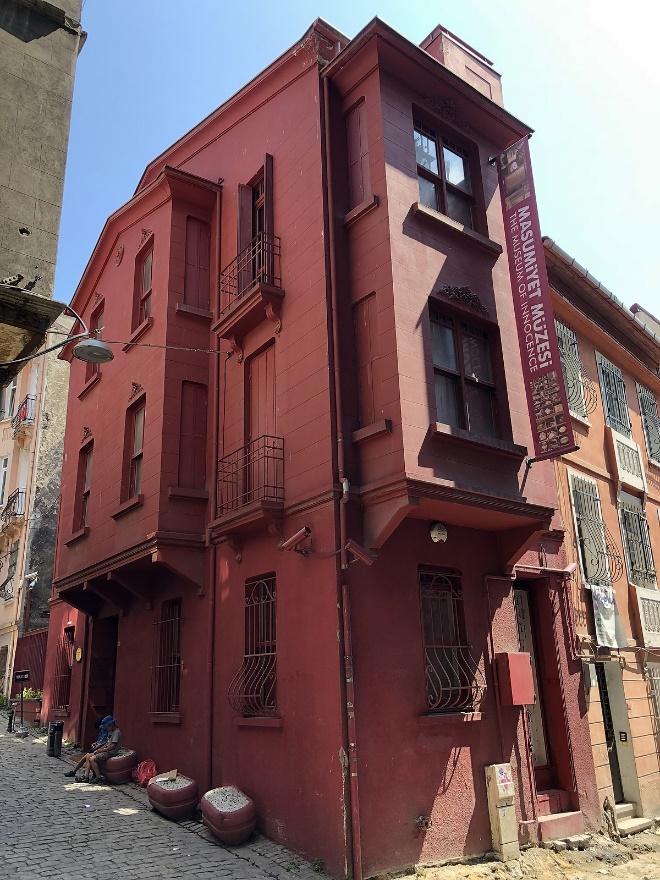
Visit the Istanbul Museum of Modern Art
The next stop on our way to get acquainted with Istanbul is the Istanbul Museum of Modern Art. The peculiarity of this museum is that it is the first private museum in the country which contains modern and contemporary art. It may appeal both to those who have never been acquainted with this kind of art before and to those who are avid lovers of exhibitions. The Istanbul Museum of Modern Art presents permanent and temporary exhibitions of twentieth-century artists. Moreover, it has a “photography gallery, and several areas for educational and social programs” (Istanbul Museum of Modern Art, 2021, para. 4). The uniqueness of this attraction is also the private collection of the Eczacıbaşı family, who are the founders of this museum.
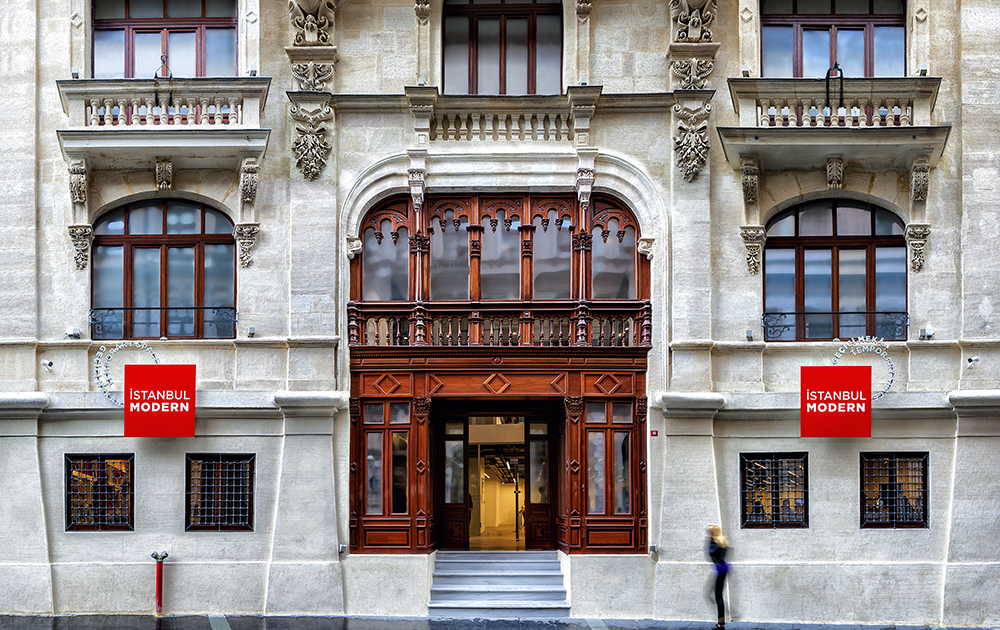
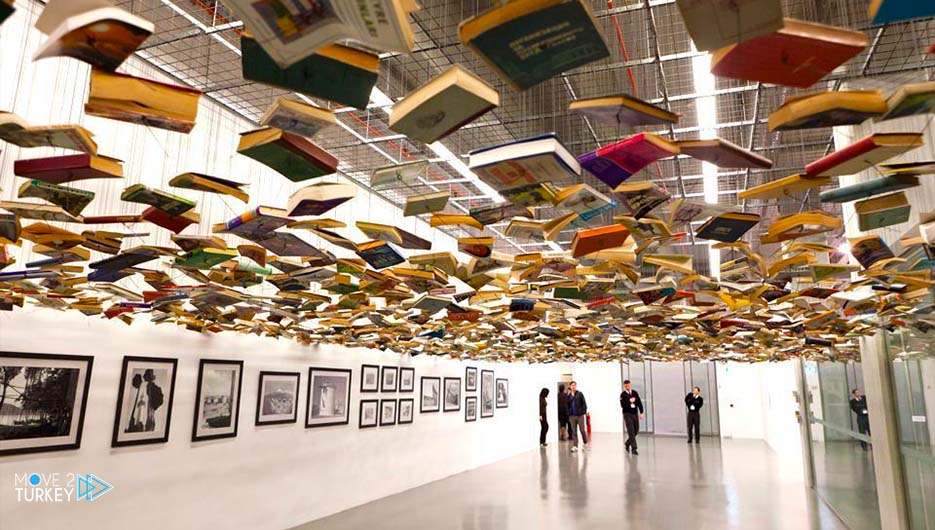
Visit the Galata Tower
After visiting the museum, our group will go to one of the main architectural attractions of Istanbul, which is located in the European part of the city. It is considered one of the most ancient buildings in the whole world, and it is in excellent condition. Moreover, it is known as the symbol of Istanbul, and it offers a delightful and fascinating view of the panorama of the city. Galata Tower or Galata Kulesi “was included in the UNESCO World Heritage Temporary List in 2013” (Everything you need to know about Galata Tower Istanbul, n.d.). However, it was not always just a tourist attraction; it was originally used as a fire watchtower and was named Galata Fire Tower. To this day, it has not been determined when the tower was built, but it is assumed that the date of its foundation is 527 AD (Everything you need to know about Galata Tower Istanbul, n.d.). It has experienced much damage, especially due to the massive earthquake in 1590 (Everything you need to know about Galata Tower Istanbul, n.d.). Moreover, it had such appointments as a prison and an observatory.
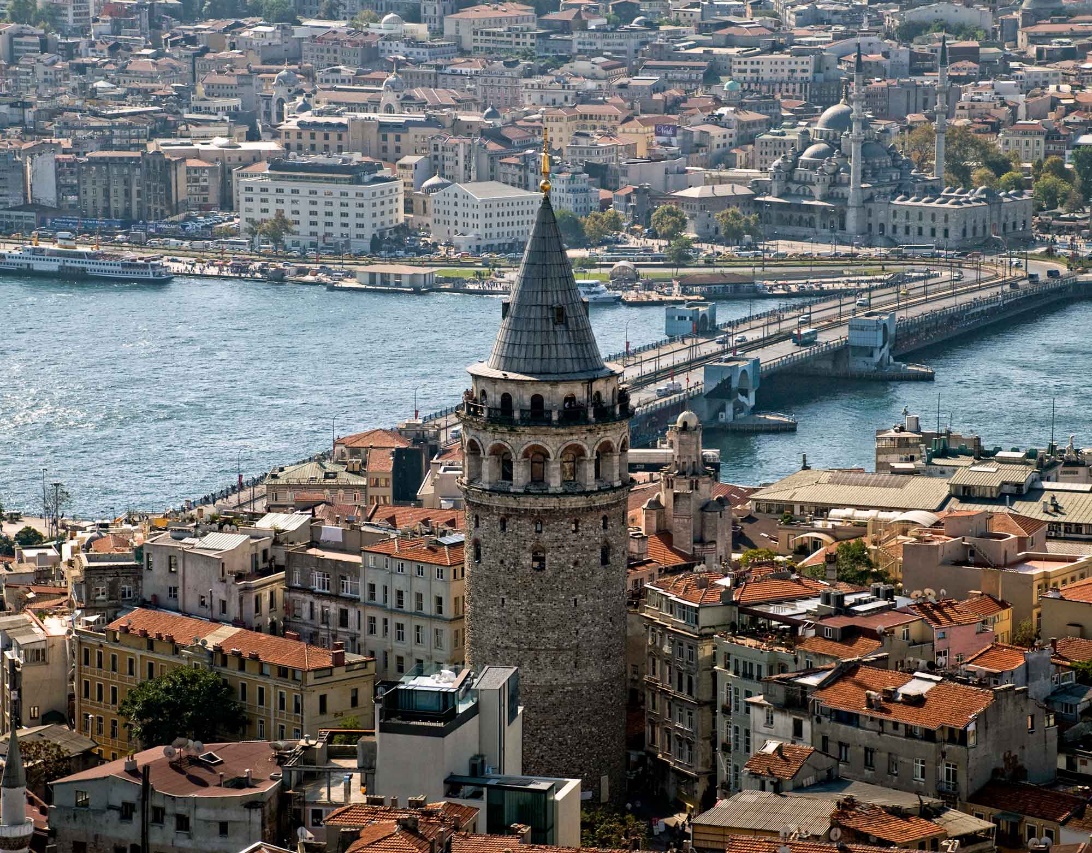
Visit Saint Stephen Church
The longest time will be devoted to one of the most picturesque buildings in Istanbul, the St. Stephen’s Church. It is located in Balat, on the coast of the Golden Horn and is “a legacy of the Bulgarian minorities from the Ottoman period” (Bulgarian St. Stephen Church, n.d., para. 2). The church owes its unique architecture to Neo-Gothic and Neo-Baroque styles. The elements of the building are made of steel, cast-iron plates, which is reflected in the name “Iron Church” (The Bulgarian St. Stephen Church, n.d.). Another unique feature is the presence of six bells, which were cast in Yaroslavl. You and I will visit the church itself and become spectators of its services, since it is open to visitors. We will enjoy the beautiful interior decorations and ornaments of the building. After visiting St. Stephen’s Church, we will be able to walk around the sights and enjoy the beautiful views of the embankment.
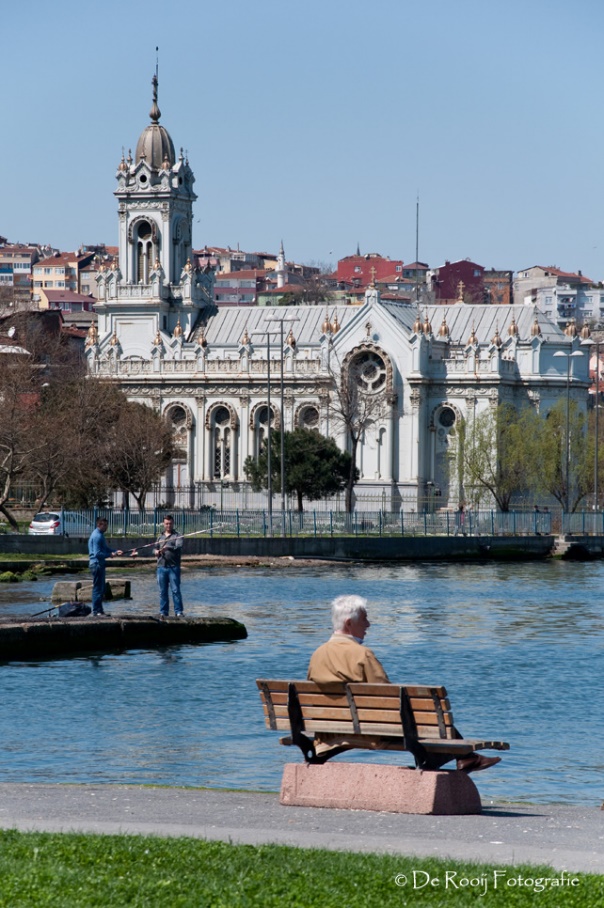

Visit Rustem Pasha Mosque
Next, we will go to see one of the most famous Muslim place of worship called Rüstem Paşa Mosque. The uniqueness of this place is the delicate examples of classical Iznik tiles (Rüstem Paşa Mosque, n.d., para. 2). Despite its small size, it is worth a visit, due to its beautiful appearance. Not very many people visit this place, but only because it is hidden from the eyes of tourists. Rustem Pasha Mosque has the stunning interior that will conquer any person. On the way to this place, we will pass by Eminönü tram stop, Spice Bazaar and many Turkish coffee shops.
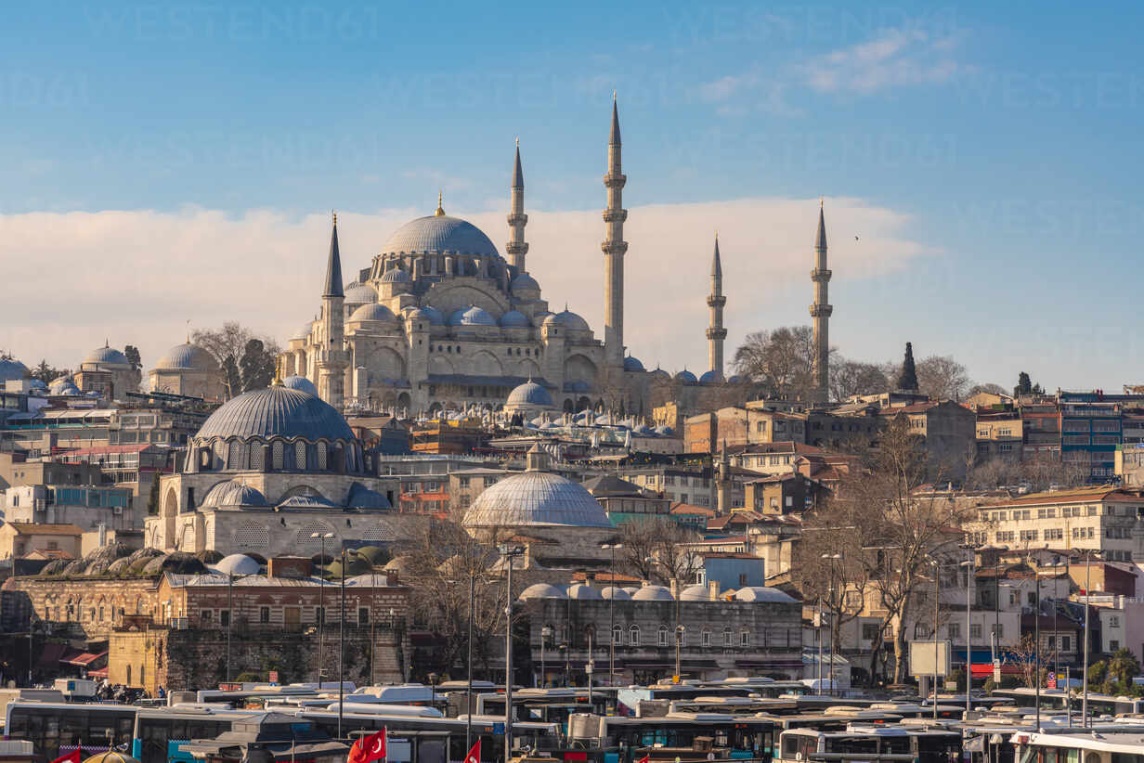
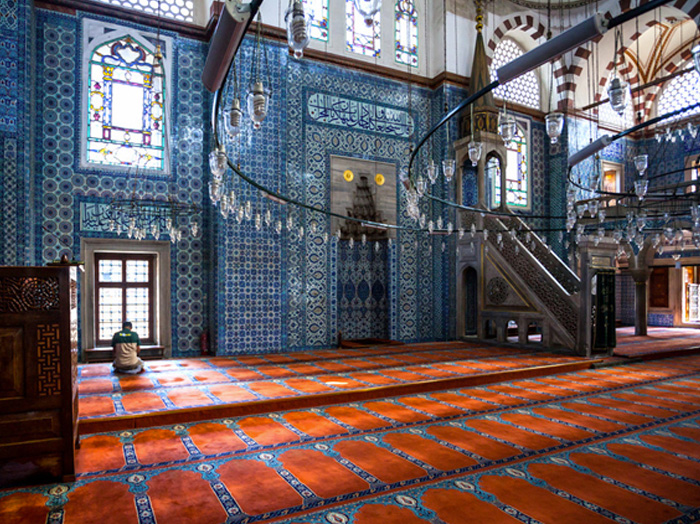
Visit the Walls of Constantinople
Many cities have walls that have protected and protected the city for a long time. These are our next attractions, called The Walls of Constantinople or Byzantine Walls. They were erected by Constantine the Great and originally fenced in Istanbul, which at that time was quite small in size. The armed forces of the city protected residents from invasions not only from the land but also from the sea. With the passage of time, several modifications were added to the wall to fix problems and create a larger protection wall (Walls Of Constantinople, n.d., para. 1). It should be understood that the walls now do not look the way they used to look, but they still show the strength that Istanbul has maintained for many years. Thus, it can be said that they are the window to the past and amaze with their size. In addition to the restored places, there are places where the original sections of the wall were left.
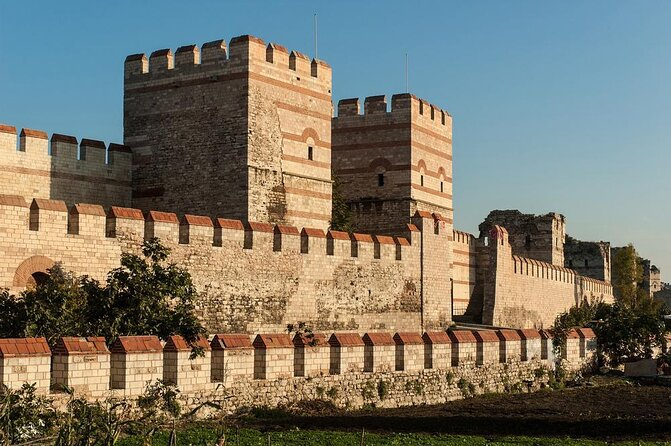
Visit the Theodosius Cistern
Istanbul provides a huge number of attractions that will win the heart of any visitor to the city. However, not all of them are located on the surface of the city and are open to the view of visitors to the city. This is exactly the attraction of the Theodosius Cistern, which is one of my favorite places to visit. It is located in the Historical Peninsula and is “the earliest example of the water structures of the city with a history of 1600 years” (Theodosius Cistern – Everything you need to know about visiting, 2022, para. 2). Cistern has a long history and was built during the rule of Theodosius II in the fifth century. Theodosius Cistern is a unique representation of the ancient water system. We will fully plunge into the underground magical world of the city and enjoy the atmosphere of this unique place.
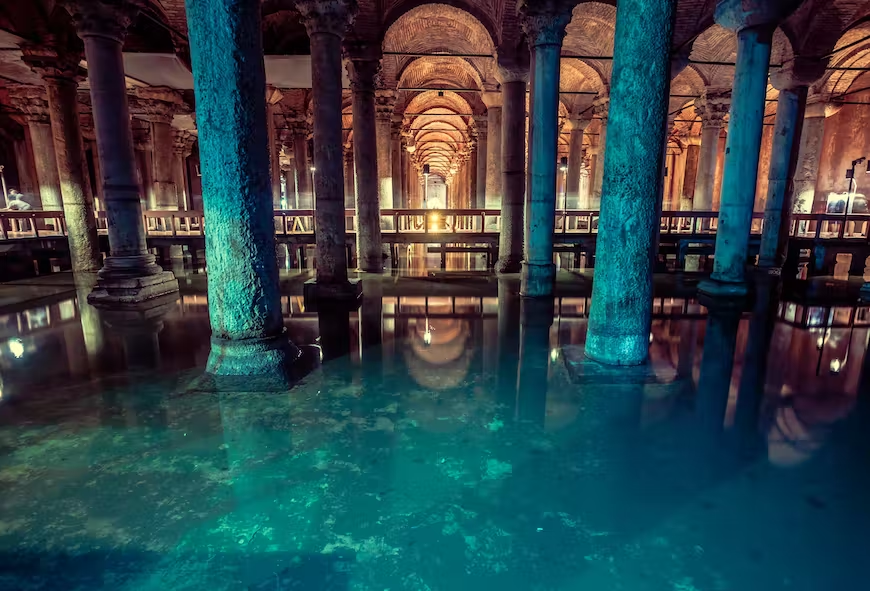
Visit the Heritage Nomadic Art Gallery
The last stop of our wonderful journey is the Heritage Nomadic Art Gallery. It is located in the magical Sultanhamet district, which has many attractions. It is visited daily by many tourists, so it is quite a crowded place. The architecture of the district impresses with its beauty and grandeur. The art gallery itself provides a “magical world of textiles, rugs, and everything related to embroidery and knitting in the ancient life of the people of Istanbul” (Information about Heritage Nomadic Art Gallery, n.d., para. 1). It is with this colorful variety that the place amazes tourists visiting it. All excellent products are made with natural dies and the best quality wool. These products reflect the history of the Turkish city and reflect the heritage of its population.
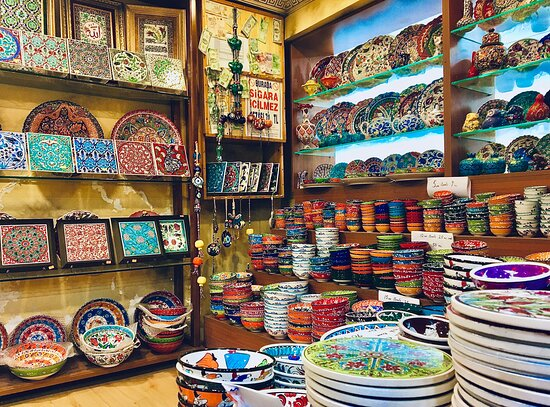

Conclusion
In conclusion, creativity and tourism are two essential aspects that are interconnected. Creativity is vital in tourism because it can help create new and innovative products and experiences that attract tourists. Tourism is vital for creativity because it can provide inspiration and new ideas. Both creativity and tourism can have a positive impact on the economy and society. There are many reasons why Istanbul city was selected for study on an analysis to reveal how Cities are increasingly promoting themselves by showcasing their culture and creativity through creative industries, creative areas, and creative experiences. One reason is that Istanbul has a long and rich history. It has been a crossroads of cultures for centuries, reflected in its architecture, cuisine, and arts. Istanbul is also a very diverse city with many creative professionals. This diversity provides a unique perspective on the creative industries and how they can contribute to the city’s economy and identity.
Additionally, Istanbul is a rapidly growing city, and the creative industries play an increasingly important role in its development. The city’s government has supported the creative industries and invested in infrastructure and initiatives to promote them. This has made Istanbul an attractive destination for creative businesses and professionals. Finally, Istanbul has a strong sense of identity and pride. Its citizens are passionate about their city and its culture, reflected in its creative scene. Istanbul is a vibrant and exciting place to live and work and is ideal for studying the creative industries.
In recent years, Istanbul has become one of the most popular tourist destinations in the world. The city has a lot to offer visitors, including a rich history, a vibrant culture, and a wide range of creative and cultural resources. Istanbul is home to several world-famous museums, including the Topkapi Palace Museum, the Hagia Sophia Museum, and the Istanbul Archaeological Museum. These museums are a great way to learn about the city’s history and culture. Istanbul also has some art galleries that showcase the work of local and international artists. Istanbul has a lot to offer tourists, and its cultural and creative resources are a big part of what makes it such a popular destination. These resources are a great way to learn about the city and its culture, providing visitors with a unique and enjoyable experience.
The creative trail developed for visitors to experience the fantastic scenery of Istanbul is truly a one-of-a-kind adventure. The trail is designed to ensure visitors can take in all of the beauty that Istanbul offers. From stunning cityscape views to unforgettable sunsets, Istanbul is a city that is sure to take one’s breath away. It is evident that this trail will provide visitors with an unparalleled experience and that they will leave Istanbul with memories that will last a lifetime. Istanbul is full of fantastic scenery and many different ways to experience it. One great way to see the city is by walking through one of the many different neighborhoods. Each neighborhood has its unique flavor, and there are plenty of different things to see and do in each one.
Reference Lists
Al-Ababneh, M.M. (2019) ‘Creative cultural tourism as a new model for cultural tourism,’ Journal of Tourism Management Research, 6(2), pp. 109-118.
Bakas, F.E., et al. (2020) ‘Connecting to place through creative tourism,’Creative Tourism Dynamics: Connecting Travelers, Communities, Cultures, and Places. Web.
Bulgarian St. Stephen Church (Sveti Stefan Kilisesi)(n.d.). Web.
Demir, E.M. (n.d) ‘On the current situation of creative industries in Turkey,’ Etkileşim, 1(9), pp. 224-239. doi:10.32739/etkilesim.2022.5.9.162
Ekici, A. (2022) ‘Local-level “Best practices” during covid-19 and their impact on community well-being: Cases from the municipality of Kadıköy, Istanbul,’ Springer, Cham, 1(1), pp. 531-548. doi:10.1007/978-3-030-98152-5_25
Everything you need to know about Galata Tower Istanbul (n.d.). Web.
Information about Heritage Nomadic Art Gallery(n.d.). Web.
Istanbul Museum of Modern Art (Where, What to see? Entrance fee)(2021). Web.
Oscar, C. (2020) ‘Sustainable tourism community: A case study of İstanbul,’ Journal of Multidisciplinary Academic Tourism, 5(2), pp. 63-79. doi:10.31822/jomat.739909
Parlak, Baycan, T. (2020) ‘The rise of creative hubs in Istanbul,’ European Spatial Research And Policy, 27(1), pp. 127-147. doi:10.18778/1231-1952.27.1.06
Rüstem Paşa Mosque(n.d.). Web.
Stalmirska, A.M. (2020) ‘Cultural globalization and food in urban destination marketing,’ Tourism Geographies, 1(1), pp. 1-19. doi:10.1080/14616688.2020.1857429
The Bulgarian St. Stephen Church(n.d.). Web.
The Museum of Innocence (n.d.). Web.
Theodosius Cistern – Everything you need to know about visiting(2022). Web.
Üzülmez, Akdağ, G. (2020) ‘Analysis of motivations of foreign tourists behind their choice of turkish cuisine based on their neophobic and neophilic tendencies: A research in Istanbul,’ Seyahat ve Otel İşletmeciliği Dergisi, 17(3), pp. 540-552. doi:10.24010/soid.720612
Walls Of Constantinople(n.d.). Web.